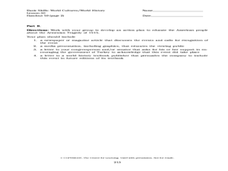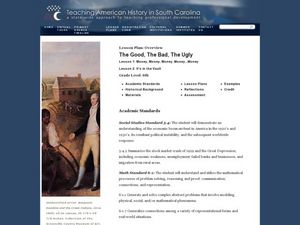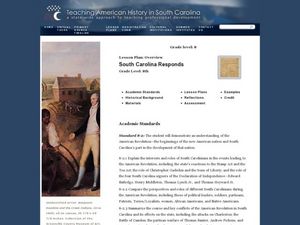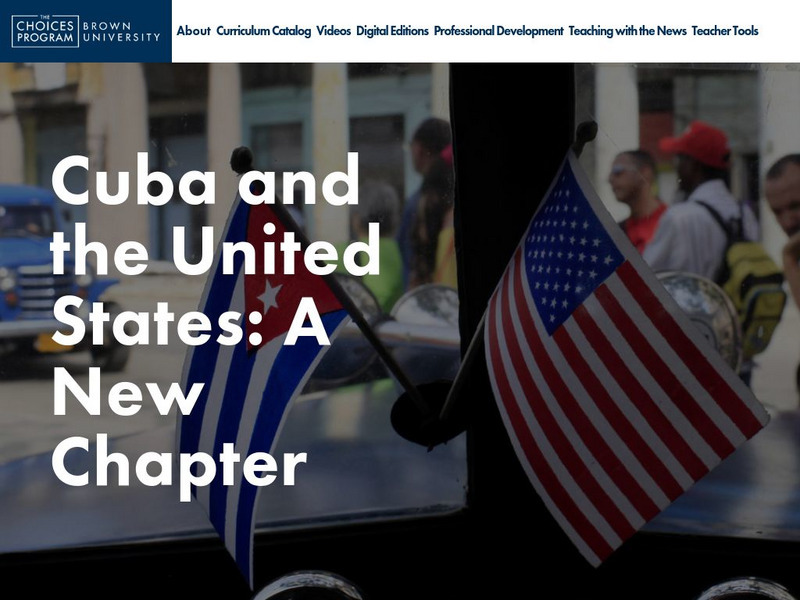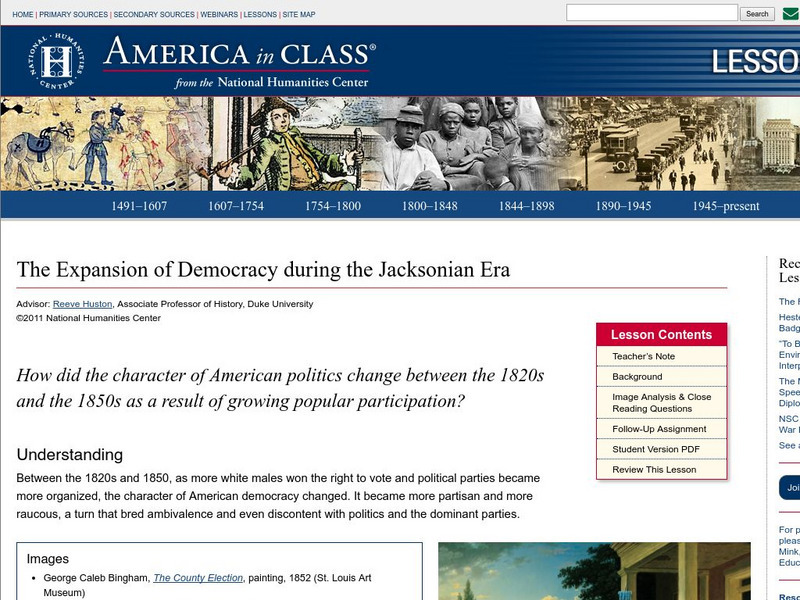Curated OER
Historical Maryland Women
Students identify objects, activities, and people in pictures of women in Maryland's history. In groups of four, they analyze photo packets of historical women. Students complete an acrostic using phrases reflecting specific...
Curated OER
Night by Elie Weisel
Students read "No News from Auschwitz" and answer the study questions as an introduction to the novel. They record reactions to the essay and compare with reactions after reading "Night".
Curated OER
Working Conditions in America: 1880s versus 2000s
Learners conduct research into the life of Americans and how working conditions have changed over time from the 1880's to modern times. They use primary and secondary resources in order to compile research in order to report the findings...
Curated OER
Women's Votes, Women's Voices
Students investigate Women's Suffrage by analyzing images from the past. In this equal rights lesson, students read biographical work about Emma Smith DeVoe, an activist who fought for women's rights. Students view a comic style...
Curated OER
The Fall of the Roman Empire and the Armenian Tragedy of 1915
Young scholars examine the fall of the Roman Empire and the Armenian tragedy. In this world history lesson, students read handouts about both world history events and create presentations that feature the events.
Curated OER
Jazz in America
Eleventh graders explore Jazz in America. They examine greats in Jazz, such as Duke Ellington. They are also to discuss the cultural implications of the music itself.
Curated OER
What Kind of Santa Claus You Are.
Students use a photograph analysis sheet to analyze primary sources (photographs) of the Great Depression in small groups. They then write a poem about kids in the Depression Era that reflects their comprehension of the period and its...
Curated OER
Civil Service Reform: Senate Debates
Students examine the 1883 Pendleton Civil Service Reform Act. They discuss the spoils system, answer discussion questions, read and analyze speeches, complete a worksheet summarizing their findings, and report their findings to the class.
Curated OER
The Oily "Grail"
Students discover the quest for a balance between oil exploration and a concern for the environment in Alaska. They synthesize their knowledge by debating the current length of the oil-drilling season.
Curated OER
The Good, The Bad, The Ugly
Sixth graders examine the causes of the stock market crash of 1929. In this integrated math/history unit on the stock market, 6th graders study, research, and read stocks, visit a local bank, and create a PowerPoint to show the finished...
Curated OER
Virginia In the World: The Geography of Commerce
Young scholars examine how Virginia connects with the world through export trade. Using a map, they use symbols to depict the value of trade and the direction of the flow of goods. They complete a scavenger hunt using electronic almanacs...
Curated OER
Selling Warfare - Propaganda Posters
Students examine the use and purpose of propaganda posters during World War I. They work in groups to create a propaganda poster supporting a nation's war effort.
Curated OER
Media Center Map Skills
Student demonstrates the ability to locate, retrieve, and handle media and equipment by utilizing the library media center floor plan, symbols, and guides. They then use systems of classification to identify, locate, and retrieve materials.
Curated OER
South Carolina Responds
Students examine and explain the events that lead up to the Revolutionary War. For this Revolutionary War lesson, students summarize and evaluate several of the major battles that defined the Revolutionary War.and major battles involving...
Choices Program, Brown University
Choices: u.s. Policy in the Middle East: Analyzing Political Cartoons
Multi-media resources including video, PowerPoint, articles and maps from which students explore current issues in the Middle East and their relation to U.S. policy and interpret political cartoons on Middle East politics.
Choices Program, Brown University
Choices: The United States in Afghanistan: Analyzing Political Cartoons
Using videos, handouts, and online resources, students explore viewpoints on the U.S. presence in Afghanistan, interpret political cartoons and place them in the context of a political discussion about Afghanistan, and identify the...
John F. Kennedy Center
The Kennedy Center: Drawing Political Cartoons: How Do They Convey Messages About Current Events?
In this 9-12 lesson, young scholars will analyze cartoon drawings to create an original political cartoon based on current events. Students will apply both factual knowledge and interpretive skills to determine the values, conflicts, and...
Choices Program, Brown University
Choices: Teaching With the News: The Gulf Oil Disaster
Multi-media lesson plan includes a video, PowerPoint, and handouts from which students explore the issues raised by the 2010 Gulf of Mexico oil disaster and interpret political cartoons and the cartoonist's message.
Choices Program, Brown University
Choices: Teaching With the News: Cuba and the United States: A New Chapter
Current and relevant learning resource from Brown University in which students explore the changing relationship between the U.S. and Cuba, interpret political cartoons and monitor news media coverage of U.S.-Cuba relations over time....
National Humanities Center
National Humanities Center: America in Class: Expansion of Democracy During the Jacksonian Era
Lesson where students explore the emergence of the American system of democracy and political parties between 1820 and 1850. Using paintings by George Caleb Bingham and Richard Caton Woodville, and a political cartoon depicting the...
Library of Congress
Loc: The Titanic: Shifting Responses to Its Sinking
In 1912, popular media headlined the sinking of the world's largest luxury passenger ocean liner while on its maiden voyage. Newspapers captivated the world's attention with stories from survivors and about victims who did not survive....






